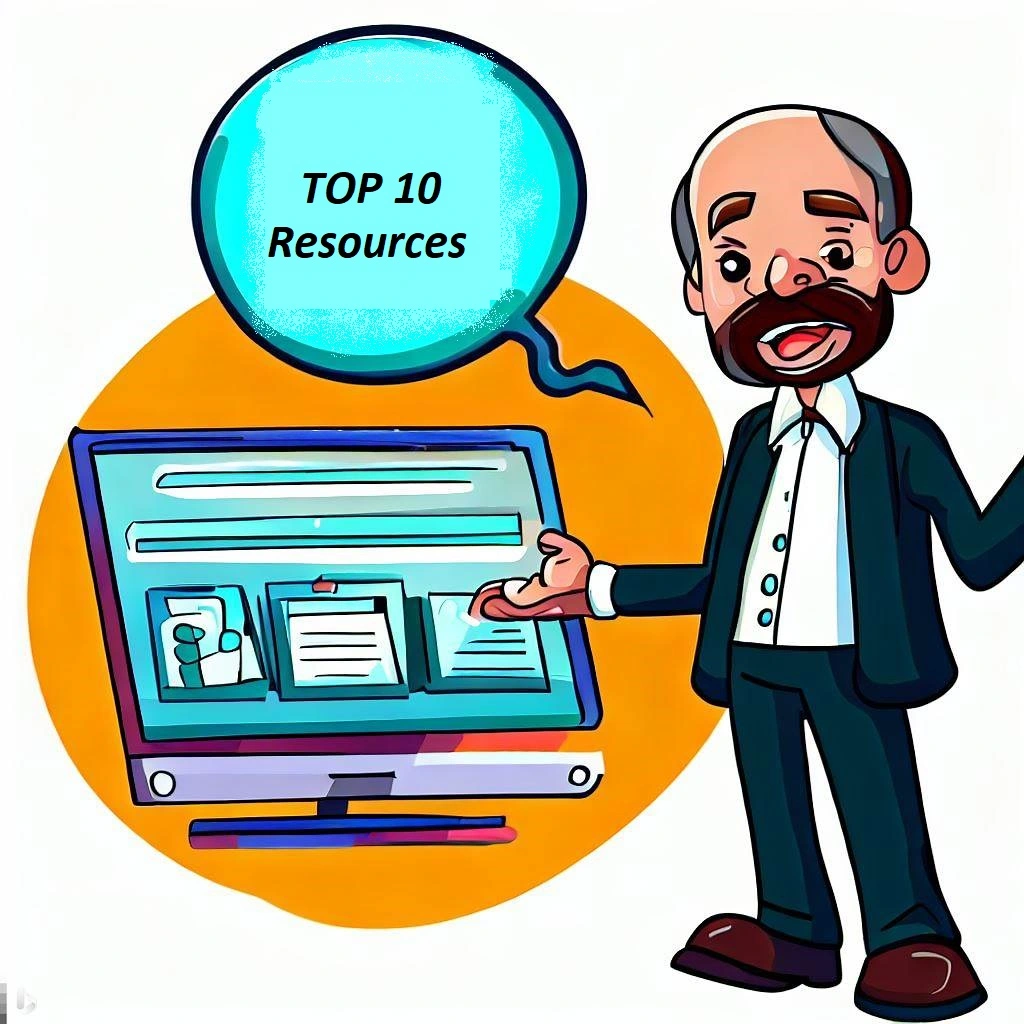Achieving Excellence in Completing Image Processing Assignments with Top 10 Resources
May 18, 2023

Sophia Thomas
United States of America
Image Processing
Dr. Sophia Thomas, Ph.D. in Computer Science from Duke University, with 9 years of expertise in image processing with MATLAB assignments.

Image processing is a field that is growing quickly. It involves changing digital images using different algorithms and techniques to get information out of them or make them look better. Image processing is a key part of many applications, such as computer vision, medical imaging, and remote sensing. As a student of image processing, it can be hard to finish assignments that require a deep understanding of image processing ideas and methods, especially when working with complex algorithms or large datasets. But if you have the right tools and resources, doing image processing assignments can be a fun and rewarding experience.
In this blog post, we'll talk about the top 10 tools that can help you do well on your image processing assignments. These resources cover a wide range of topics, from learning resources and online tutorials to MATLAB documentation, image databases, and online communities. By using these resources, you can learn more about how image processing works, get hands-on experience, and keep up with the latest developments in the field. No matter how much you know about image processing or how new you are to the field, these resources can help you do well on your image processing assignments and advance your career in the field.
1. Online Tutorials and Courses:
Courses in image processing are available in a wide variety on a variety of online platforms, including Coursera, Udemy, and edX. These platforms cater to students of all experience levels. You are able to learn at your own pace with these courses because they offer comprehensive video lectures, practical examples, and hands-on assignments. These tutorials provide you with the knowledge and skills necessary to tackle image-processing assignments in an efficient manner. Ranging from introductory courses that cover basic concepts to specialized courses on advanced topics such as image segmentation and deep learning for image processing, these courses cover a wide range of topics. Because of the interactive nature of online courses, you are able to engage with both the instructors and other students, which helps to foster a learning environment that emphasizes collaboration.
2. MATLAB Documentation:
The official documentation that MATLAB provides serves as an exhaustive resource for performing image processing tasks. It offers in-depth explanations of MATLAB's image processing-related syntax, functions, and toolboxes for those interested in the field. The documentation consists of step-by-step instructions for implementing algorithms, code examples that illustrate various image-processing techniques, and explanations of underlying concepts. The documentation that comes with MATLAB is a valuable resource that can be consulted for guidance and understanding whenever you need to perform operations as simple as image resizing or as complex as image registration or object recognition.
3. Image Processing Toolboxes:
The Image Processing Toolbox and the Computer Vision Toolbox are two of the specialized toolboxes that are available to users of MATLAB. These toolboxes offer a wide variety of functions, algorithms, and examples that have been developed specifically for the purpose of image processing. Image enhancement, filtering, feature extraction, and morphological operations are just some of the many facets of image processing that are covered by the Image Processing Toolbox. The Computer Vision Toolbox is designed to assist users with more complex responsibilities, such as object detection, tracking, and 3D vision. These toolboxes come equipped with pre-implemented functions and workflows that can be customized, both of which help to expedite the process of developing image processing solutions for your projects. You will be able to utilize these toolboxes to their fullest potential by following the step-by-step instructions and usage guidelines that are provided in the documentation and examples that accompany them.
4. Online Image Databases:
It is absolutely necessary to have access to a wide variety of image datasets in order to test and evaluate image processing algorithms. Online image databases such as ImageNet, Kaggle, and Open Images provide users with access to extensive image collections that cover a wide range of subject matter, resolutions, and file formats. These databases contain images from a wide variety of categories, such as natural scenes, medical images, satellite imagery, and a great deal more besides. Taking advantage of these resources enables you to conduct experiments with images of varying types, dimensions, and degrees of complexity, thereby ensuring the robustness and efficiency of your image-processing solutions. In addition, many image databases offer annotations and ground truth labels, which makes it possible for you to validate the performance of your algorithms in comparison to established benchmarks.
5. Academic Journals and Research Papers:
It is essential to keep up with the latest research developments in image processing in order to enrich your understanding and discover innovative ways to approach assignments. Academic journals like IEEE Transactions on Image Processing, Pattern Recognition, and Computer Vision and Image Understanding publish high-quality research papers that investigate state-of-the-art techniques, algorithms, and applications. Other examples of such journals include Computer Vision and Image Understanding Letters and Computer Vision and Image Processing Letters. You can gain exposure to cutting-edge methodologies and insights into the theoretical foundations of image processing if you read and analyze the papers in this collection. These resources offer a wealth of ideas and references that you can draw from when developing advanced algorithms for your assignments and putting them into practice.
6. Online Forums and Communities:
Participating in online communities and forums that are solely devoted to image processing is a great way to facilitate active learning and the exchange of knowledge. Platforms such as Stack Overflow, MATLAB Answers, and GitHub Discussions offer users the opportunity to seek advice, pose questions, and discuss difficulties associated with image processing assignments. These communities are made up of specialists, working professionals, and fellow students who are willing to help one another out, share snippets of code, and offer advice based on their own personal experiences. Participating actively in these platforms gives you the opportunity to increase your level of understanding, learn alternative methods, and pick up useful tips and tricks that can improve the quality of your work.
7. GitHub Repositories:
The open-source image processing projects and repositories that can be found on GitHub serve as a hub for the community. Investigating repositories that are solely devoted to image processing grants access to a vast library of implementations, code samples, and other useful resources. There are many different implementations of algorithms that have been developed by researchers and practitioners. Some examples of these algorithms include image filtering, object recognition, and segmentation. Investigating the source code as well as the documentation contained within these repositories can provide extremely helpful insights into the operational facets of putting image processing algorithms into practice. In addition, you will have the opportunity to make contributions to open-source projects, work in tandem with developers, and gain practical experience in the implementation of image processing methods.
8. Academic Institutions' Resources:
The field of image processing is supported by a wealth of online resources and materials made available by a variety of academic institutions. These resources are frequently available through the websites of academic institutions, various learning management systems, or specialized online platforms. They could consist of lecture notes, slides, additional reading materials, and sample assignments, among other things. Utilizing these resources enables you to better align your learning with the course material, obtain a more in-depth understanding of the concepts that have been discussed in class, and acquire additional examples and explanations related to image processing. In addition, some educational establishments give their students access to online discussion boards or forums where they can engage in two-way communication with their instructors and other students in order to get questions about their assignments answered or seek clarification.
9. Digital Libraries and E-Books:
There is a vast collection of books, research papers, and articles pertaining to image processing that can be found in digital libraries found online such as Google Scholar, IEEE Xplore, and SpringerLink. These resources cover a diverse range of subject matter, encompassing everything from fundamental textbooks to specialized research publications. They present in-depth explanations, mathematical formulations, and practical implementations of various image-processing algorithms and techniques. You will be able to gain a comprehensive understanding of the theoretical and practical aspects of image processing if you take advantage of these resources, which will allow you to delve deeper into specific areas of interest, investigate advanced concepts, and explore advanced topics.
10. Peer Collaboration and Networking:
Image processing conferences and seminars offer valuable opportunities for learning, sharing information, and networking. Learning from peers, joining study groups, and participating in these events are all excellent ways to take advantage of these opportunities. Participating in conversations with other students gives you the opportunity to acquire new perspectives, exchange insights, and work together to find solutions to issues relating to image processing assignments. Participating in study groups can create an atmosphere conducive to collaboration, allowing students to work on assignments together, talk about different ideas, and gain insight from one another's life experiences. Participating in image processing-related conferences and seminars puts you in the position to hear the most recent findings of research, emerging trends, and expert talks. Your image processing skills will improve further, and your professional network will grow if you network with professionals and researchers working in the field. Doing so will open doors to mentoring, guidance, and potential research collaborations.
Conclusion
To do well on image processing assignments, you need to know a lot about the ideas and methods of image processing. As we've talked about in this post, there are many ways to learn the theoretical and practical skills you need to do well on your image processing assignments. From online tutorials and MATLAB documentation to image databases, academic journals, online communities, and peer collaboration, these resources give you everything you need to do your image-processing assignments well.
By using these resources, you can improve your skills, learn more, and keep up with the latest developments in image processing. Whether you are a beginner or an advanced student of image processing, these resources can help you handle difficult assignments and do well in your career. If you have the right tools, doing image processing assignments can be a fun and fulfilling experience.